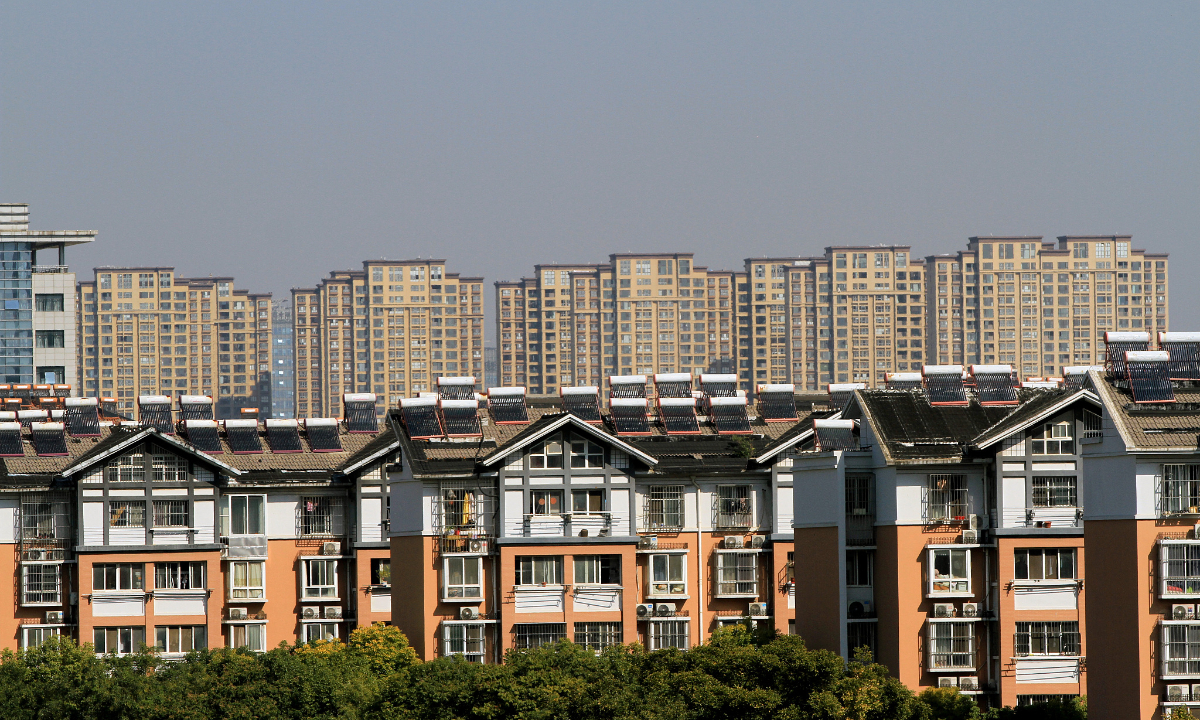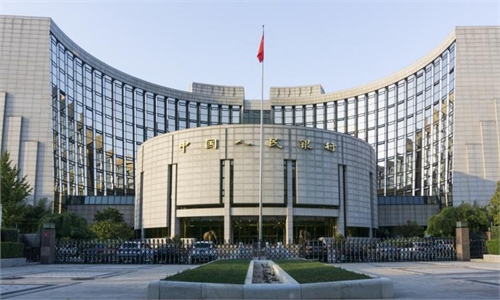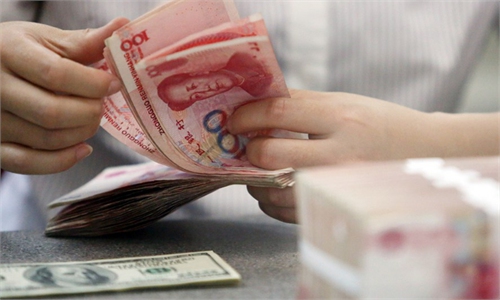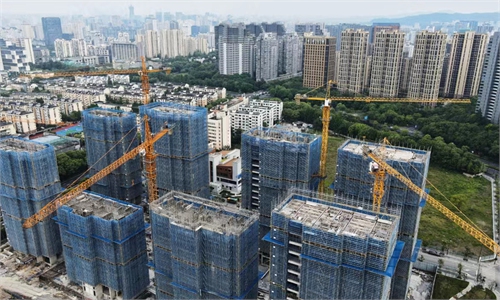
Real estate market. Photo:VCG
China kept its monthly benchmark lending rate unchanged on Monday, a move that met market expectations, after policymakers launched "ground-shaking" measures last week to boost housing loans, and as the Chinese economy has embarked on a steady recovery track this year, which all reduce the urgency of an imminent interest rate cut.
The one-year loan prime rate (LPR) was kept at 3.45 percent, while the five-year LPR was unchanged at 3.95 percent, China's central bank announced on Monday.
The lending rate has stayed the same for three consecutive months. In February, the five-year LPR was lowered by 25 basis points, while the one-year LPR was unchanged at 3.45 percent.
Observers said the benchmark lending rate in May was kept unchanged due to a number of factors, one of which was the policy measures unveiled last week that significantly brought down the financing cost for housing loans.
Yan Yuejin, research director at Shanghai-based E-house China R&D Institute, told the Global Times on Monday that decreasing financing costs for home purchases, against the backdrop of a relatively stable macro interest rate environment, underscored policymakers' resolve and determination to actively bolster the property market.
China's central bank said on Friday that it would lower the interest rate for housing provident fund loans by 0.25 percentage points for both first- and second-time homebuyers from Saturday.
Authorities also abolished the lower limit of the interest rate for commercial individual housing loans at the national level. The central bank's provincial branches have been given the autonomy to determine independently the lower limit of commercial housing loan interest rates, based on local real estate market conditions and the requirements of local governments.
"Those policies are boosting the market from both the supply and demand sides, making a reduction in the LPR less urgent and necessary this month. They are also a manifestation of China's flexible monetary policy that is targeted, precise and with appropriate strength," Yan said.
Industry insiders noted that further adjustment of the LPR needs to be coordinated with other policies in supporting developers' financing needs, adjusting down payments and reducing housing inventories. They expect the housing interest rate to be further reduced in the second half of the year.
In various localities, the property markets have showed signs of a modest rebound over the weekend. In Shenzhen, South China's Guangdong Province, transactions of secondhand apartments rose 117 percent on Saturday and Sunday at certain property agencies from this year's average level, news website eastmoney.com reported on Monday. The daily transaction volume on Sunday was the highest since February 2021.
Last week, China's central bank kept the interest rate of its medium-term lending facility at 2.5 percent, unchanged from the previous operation, which means that there's no urgent need for commercial banks to reduce the short-term LPR, Zhou Maohua, a macroeconomist at China Everbright Bank, told the Global Times on Monday.
Zhou added that the steady recovery momentum of the world's second-largest economy also provides support to the decision on interest rates.
China's economy maintained stable growth in April, with key indicators for industry, exports and employment showing improvement from March, data released by the National Bureau of Statistics showed on Friday.
Meanwhile, "a reduction in deposit interest rates, along with ample monetary policy space, could potentially open up some room for a downward adjustment in LPR quotations, though the scope of any reduction could narrow," Zhou said.
A Communist Party of China Central Committee Political Bureau meeting held in April stressed that it is necessary to flexibly employ policy tools such as interest rates and reserve requirement ratios to increase support for the real economy and reduce the overall financing costs of society.



